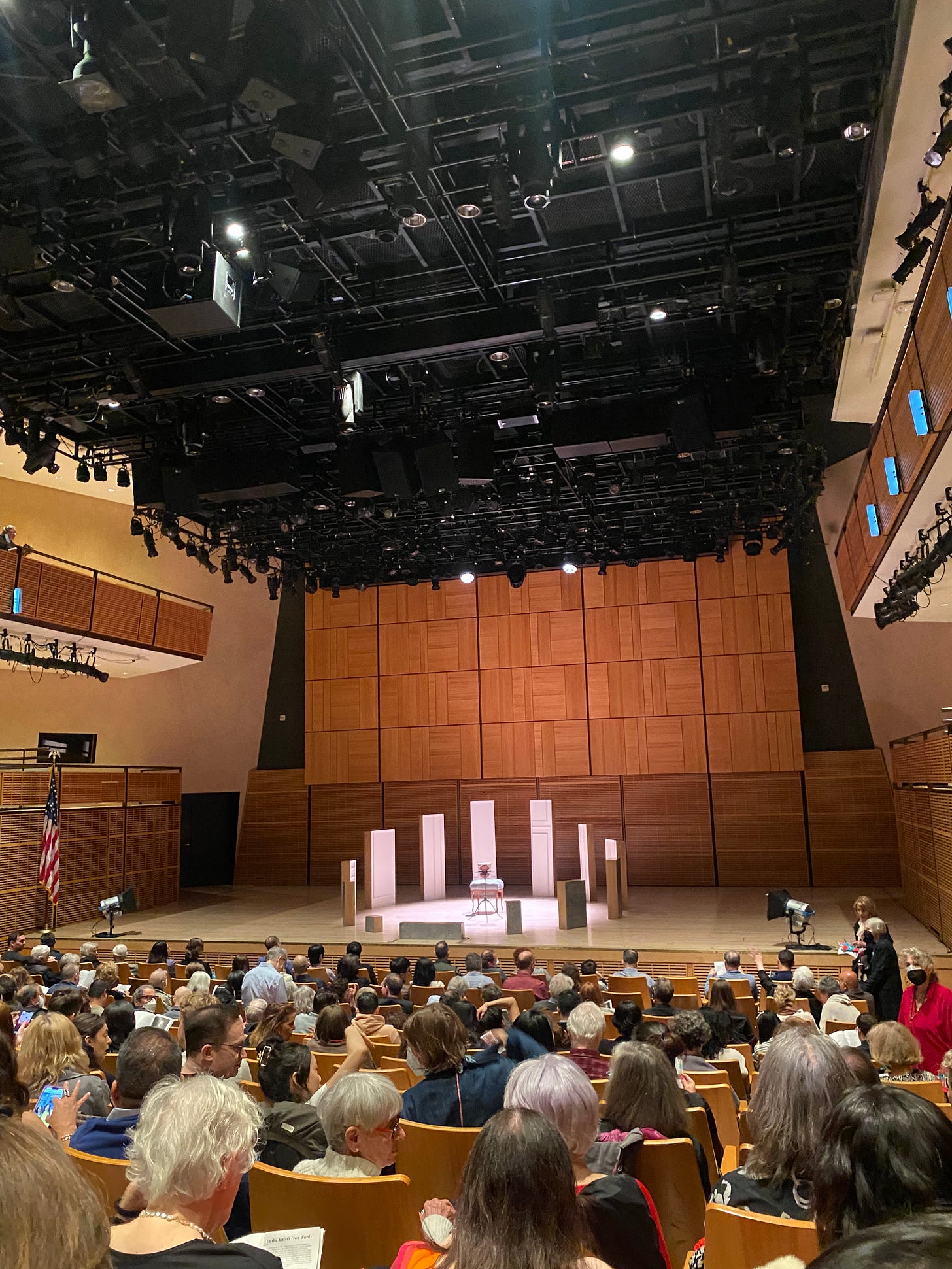Piecing Together the Fragments
“There’s no late seating! If you leave, you won’t be able to re-enter!” shouted an usher at Alisa Weilerstein’s performance of Fragments at Zankel Hall on Saturday, April 1.
There was such an air of urgency, as if we were about to be shown classified information. I wouldn’t have been surprised if the usher had said, “We’re locking the doors!”
It was the New York premiere of the first of Weilerstein’s six Fragments concerts. This one was based off J.S. Bach’s Suite No. 1 in G Major for solo cello, the out-of-order movements interspersed with commissions by contemporary composers. Some, directly inspired by Bach. Others, not so much.
I noticed people leafing through the programs habitually, as if playing with their hair. Because the pages themselves contained little more than a list of donors, an ad for Hermès, and the following:
“This evening’s performance weaves together 18 short movements from works by Allison Loggins-Hull, Gili Schwarzman, Joan Tower, Johann Sebastian Bach, Reinaldo Moya, and Chen Yi.”
“The 65-minute program will be performed without intermission. Further information about the composers and their works will be provided at the conclusion of the performance.” That’s it.
It’s true that program notes can get tiring. The desire to make sense of it all becoming like a demand. We’ve all found ourselves counting down the movements ‘til concert’s end.
Shouldn’t a performance be able to stand on its own, like a collection of paintings without museum labels?
Still, I found myself numbering my notebook, 1 through 18. It felt like a game of “name that tune” rendered impossible, for I didn’t know any of the composers listed, other than Bach of course.
I kept wondering if I was doing this concert wrong. Perhaps I should just let the music wash over me, Lethe-like, rendering me uncaring of names. But something inside me fought against it.
Weilerstein walked noiselessly onstage in total darkness. Reading off an iPad, she was surrounded by various-sized blocks — almost like a prehistoric stone circle — upon which colored lights were projected.
As she started to play, here’s what I jotted down:
1. This movement feels modal, with enraged double stops.
2. The pizzicato strumming turns to arco, and the “Prelude’s” opening figure from seems to get stuck on an insistent “GDBABABABABABA.”
3. The minor-key “Minuet II” is divorced from its companion.
4. This movement is so energetic that Weilerstein’s bow hair comes loose. The light turns blue, casting shadows.
5. As Weilerstein plays the comforting “Allemande,” the stage is enveloped by a golden glow.
6. This movement is filled with warbling sounds. Weilerstein finally plucks off the broken hair.
7. Beautiful, delicate thumb position, turning to arpeggios.
8. I didn’t catch whether Weilerstein did the repeats in the “Minuet I.”
9. This movement is characterized by suspenseful runs.
10. I was daydreaming, so nearly missed this movement, with its ponticello furiosity, and left-hand pizzicato over an arco G.
11. I’ve always felt that the “Gigue” was an abrupt way to end the suite. It works well bookended like this.
12. With Elgar-esque broken chords, this movement was my favorite.
13. Weilerstein played the “Sarabande” slow and smooth, requiring so much bow control, with tasteful ornaments.
14. This movement was full of harmonics.
15. I felt uncomfortable guessing that the composer of this movement might be Asian, or at least inspired by Asian music. But the cello really did sound like an erhu, with tremolos running up the fingerboard.
16. Bach’s fast-paced “Courante” nearly stumped me. Even though I’ve played this movement countless times, it took me a second to recognize it.
17. This movement was intense and dissonant.
18. I already guessed, through process of elimination, that Weilerstein was saving the “Prelude” for last. It makes sense, as the movement feels complete in and of itself.
Weilerstein chose a respectable pace, becoming faster in the bariolage passage, and ending, with that high G major chord, all too soon.
The projections faded, and the house lights came back on.
Upon leaving, after ascending Zankel Hall’s bottle-necked escalators — “Keep it moving!” — we received a handout revealing what we’d just heard (massive spoiler alert):
1. Joan Tower, “Untitled”
2. Reinaldo Moya, “El guayoyo de la mañana” (Guayoyo Sketches I)
3. Bach, “Minuet II” (Suite No. 1 in G Major)
4. Allison Loggins-Hull, “Ebullient missteps” (Chasing Balance I)
5. Bach, “Allemande” (Suite No. 1 in G Major)
6. Chen Yi, “Ancient Song”
7. Reinaldo Moya, “Guarapo de la hora del burro” (Guayoyo Sketches II)
8. Bach, “Minuet I” (Suite No. 1 in G Major)
9. Chen Yi, “Spin Dance”
10. Allison Loggins-Hull, “Wild confidence” (Chasing Balance III)
11. Bach, “Gigue” (Suite No. 1 in G Major)
12. Gili Schwarzman, “Preludium”
13. Bach, “Sarabande” (Suite No. 1 in G Major)
14. Allison Loggins-Hulll, “Ad Libitum” (Chasing Balance II)
15. Chen Yi, “Mountain Tune”
16. Bach, “Courante” (Suite No. 1 in G Major)
17. Reinaldo Moya, “Cerrero de medianoche” (Guayoyo Sketches III)
18. Bach, “Prelude” (Suite No. 1 in G Major)




